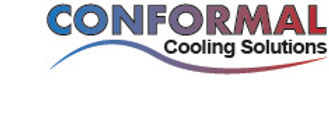


What is Conformal Cooling?
Formation of plastic components requires the heating of a media (plastic pellets) to allow them to flow into a mold cavity. When the plastic enters the mold, it fills the void between the core and cavity and produces a shape (product). At this point, the product needs to be cooled so that it can be removed from the mold in order to produce the next part.
The mold acts as the heat sink and helps draw heat away from the product. Typically the mold employs a labyrinth of drilled holes with bubblers and baffles placed in the holes to help pull as much heat as possible from the surface. Holes are drilled from the bottom and sides of the mold and must intersect to allow a path (entry and exit) as shown below
Conformal cooling involves the placement of strategically designed cooling channels which can following the sweeping contours of injection molds and stamping dies. Unlike gundrilled holes with baffles and bubbler systems, the CCS designed process allows maximum coverage over the parts being molded.


Conventional mold with gundrilled cooling passages *
Disadvantages of Conventional Cooling:
-
limited to line of sight drilling. Holes must intersect to allow entry and exit of water
-
some features require extended coolant hole end to part surface distances thus increasing cooling time even further
-
localized cooling at the end points of drilled holes require extended times. Part cooling is the longest portion of a molding process
-
extensive drilled holes reduce the amount of space available for lifters and slides which are used to help de-mold parts with complex shapes


Mold core with CCS patented conformal cooling passages implemented *
Notice the greatly reduced amount of gundrilled holes in the mold core. Also channels are manufactured which follow sweeping contours of the mold face
Advantages of Conformal Cooling:
-
CCS patented process produces additive manufactured channels which can follow the contours of the part surface providing extensive cooling capability
-
Uniform cooling reduces part warpage
-
Ability to cool hot spots which may be difficult using drilled holes
-
The process requires less drilled holes and frees up space for lifter and slide locations
-
The channels provide drastically reduced coolant pressure and allow operation with smaller, more energy efficient pumps
-
Tests have shown reductions in part cooling times up to 30% from conventional cooling techniques
-
Quicker de-mold times allow increased mold and press throughput and increases press utilization rates

* courtesy Productive Design Services http://productivedesign.com/
